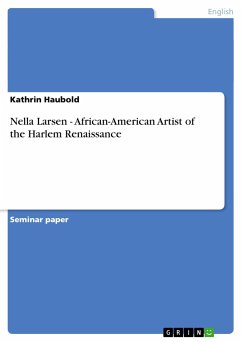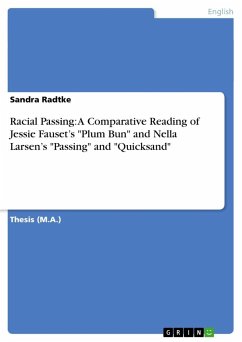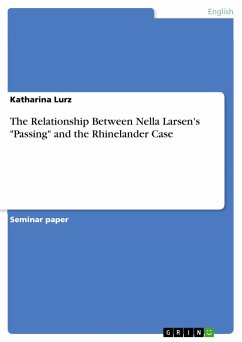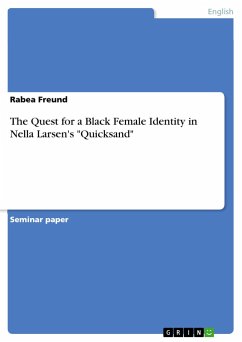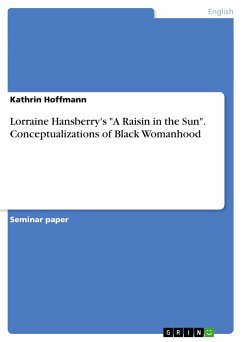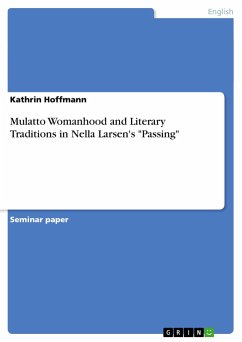
Mulatto Womanhood and Literary Traditions in Nella Larsen's "Passing"

PAYBACK Punkte
0 °P sammeln!
Seminar paper from the year 2013 in the subject American Studies - Literature, grade: 1,3, Free University of Berlin, language: English, abstract: The 1850 United States Census offered for the first time three options in the category of color: In addition to 'white' and 'black,' the option of 'mulatto' was introduced (Douglas and Yates 44). The idea for this inclusion was forwarded by the northern states of the U.S. as the South was not keen on acknowledging any mixing of the races: A mulatto or mulatta is a child born to one white and one black parent. During slavery, thousands of mulatto chi...
Seminar paper from the year 2013 in the subject American Studies - Literature, grade: 1,3, Free University of Berlin, language: English, abstract: The 1850 United States Census offered for the first time three options in the category of color: In addition to 'white' and 'black,' the option of 'mulatto' was introduced (Douglas and Yates 44). The idea for this inclusion was forwarded by the northern states of the U.S. as the South was not keen on acknowledging any mixing of the races: A mulatto or mulatta is a child born to one white and one black parent. During slavery, thousands of mulatto children were born to slave mothers and white free men, most often the masters of the women. Due to the one-drop rule (which classified anyone with as little as one drop of African blood as black), these children inherited the race and status from their mothers.In the 1920s, when the author Nella Larsen came to fame, the 'color line' between black and white Americans was drawn more sharply thanever before (cf. Kaplan xv).As mulattoes and mulattas can be of a very light complexion, they are predestined to 'pass' for white. This means that they can cross the constructed color line and live as white people. There are various, widely differing, guesses as to how many mulatto and black people passed in the late 1920s: The numbers range from 5,000 people in the U.S.each year to 75,000 people in only one city per day (cf. Kaplan xv). The concept of passing created two distinct feelings. The fact that people could simply assume another racial identity created fascination, on the one hand, and terror, on the other hand.The two protagonists of Nella Larsen'sPassing (1929), Irene and Clare, are mulattas. Though they have grown up together, they have made different choices and lead different lives: Clare has passed for white formany years, whereas Irene has stayed within the black community.A detailed comparison shows that these two women do not only represent different options for mulatto people, but that they also share characteristics. As far as character types are concerned, Clare represents the tragic mulatta. Yet Larsen puts forth a revision of this literary tradition and character type. Irene exemplifies the moral black bourgeoisie, though it becomes evident that Larsen distances herself from Irene and the black bourgeoisie's morals and ethics. Irene, in addition, also possesses tragic elements. Despite representing different character types, both Irene and Clare are the literary descendants of Iola Leroy, title character of Frances Ellen Watkins Harper's novel Iola Leroy; or, Shadows Uplifted.




